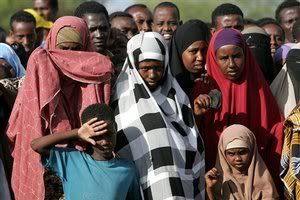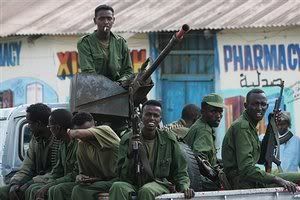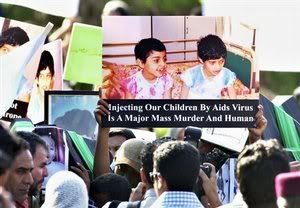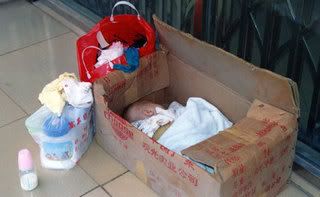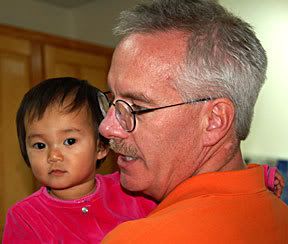Published: February 18, 2007
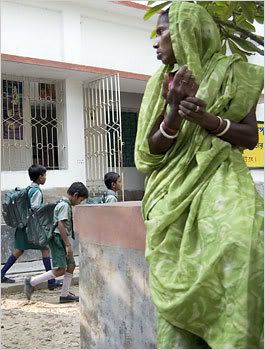
CALCUTTA, India: Seven days a week, 8-year-old Jasmina Khatoom rises before dawn to fetch water for the household where she works as a maid. She washes, sweeps and hauls until about 11 at night, when she lies down to sleep on the floor by the bathroom door.
Her employers have little patience for her exhaustion.
"I get tired and forget things, so they hit me," Jasmina said, her eyes cast down. "They want the shoes polished. If I don't do it fast enough they hit me with a cooking spoon. They want to go to the toilet. If I don't get the water fast enough I get a beating."
Jasmina has been a member of India's child labor force for more than a year now. After her father died, her mother sent her and her sister from their West Bengal village to work as maids here. Each month, she is paid 100 rupees, or $2.25.
India has no outright ban on child labor, and had long allowed the employment of children under 14 in all but what are deemed "hazardous" occupations. Last October it expanded the law to prohibit the employment of children in hotels and restaurants and as domestic servants.
Five months later, children's rights advocates say, the law has had little effect: Young children are in as great a demand as ever as maids and nannies.
"Because of the booming economy and the spread of the nuclear family, we've seen a rise in demand for domestic help, at a time when it's becoming more expensive to employ people," said Surina Rajan of the International Labor Organization. "So families are looking for a cheaper option."
Hiring an obedient 8-year-old, fresh from India's rural heartland, is a simple matter. Impoverished villagers willingly turn their children over to middlemen who promise a better life in the cities.
"Placement agencies in Delhi and Mumbai are growing like mushrooms. It is an extremely lucrative business," said Manabendra Nath Ray of Save the Children UK. "This is a slave trade. Parents are, directly or indirectly, selling their children."
The Indian government estimates that about 12 million children under 14 are employed; children's advocates say the figure could be closer to 60 million. Given the opaque nature of the trade, it is unclear how many of these children are working as maids.
Children's rights activists fault the government for not cracking down hard enough on the recruiters of children or taking measures that would make it easier on families to keep their children at home. They have urged increasing educational and job opportunities in the struggling countryside of West Bengal and the neighboring states of Bihar and Jharkhand, the source of most of the children in domestic service.
"We are disappointed," Ray said.
Officials with the Ministry of Labor and Employment said it would take time before the law's effects were evident. Shahid Meezan, director of the ministry's child labor division, said that dealing with underaged domestic servants was more problematic than, say, with underaged factory workers.
"You can't just start raiding people's private homes," he said. " You have to tread carefully."
Meanwhile, Save the Children has set up several "anti-trafficking committees" in West Bengal in hopes of disrupting the supply network through grass-roots action, including educating parents about the risks to their children, barring recruiters and urging the police to enforce the law.
At the weekly meeting of a committee in Rajbati, a hamlet of mud huts two hours' drive southwest of Calcutta, a dozen local teachers, parents and village officials described a three-tier system, made up of local child recruiters, middlemen and placement agencies in the cities.
Charts on the walls showed how nearby villages had been stripped of children: In Sankda, with 150 families, 70 children had been sent away to work; in Ajgara, home to 300 families, 105 had left.
The recruitment agents who comb through the villages, they said, are usually local women whose extensive personal contacts in the region help them identify vulnerable targets: families with six or more children, single mothers, recently widowed fathers, the permanently unemployed and the chronic alcoholics.
They list the advantages of sending a child into service: The child, they promise, will do a bit of light housework, learn city ways, which will enhance her marriage prospects, and send back monthly earnings.
Often the recruiters are met with gratitude. Despite reports of abuse of children by employers and the failure of agents to send back the children's wages, parents remain susceptible to the agents' key argument that sending the child away to work will guarantee them a better life than staying in the village.
Karuna Mondal, a Rajbati resident who sent her young teenage daughter Soma to Calcutta to work in a lawyer's house, said it had not been a difficult decision.
"I thought it would be a good opportunity for her. She had dropped out of school. What was there for her to do here?" she asked, looking around at the family home, a bare thatched shack without running water or electricity.
Even if the child ends up not sending back any money, the family can be better off, said Asha Iyer of Save the Children. "It's one less mouth to feed."
The recruiter also stands to profit, earning between 3,000 and 10,000 rupees per child, as well as a percentage of the child's monthly wages.
"The rate varies depending on the quality of the child," said Ray of Save the Children. "Is she good-looking? Does she have some basic education? Can she communicate well? They are treated as commodities. The really nice-looking girls get diverted into prostitution, which means a higher fee for the agent."
Hemlata Mondal, a local housewife who used to scour the local villages for candidates, said she got into the business when she realized how lucrative gathering children could be.
"No one has shunned me for the work I did," she said. "I felt I was doing something good for the families."
She stopped work last year after the police, under pressure from the activists, threatened her with arrest.
So far, the government's enforcement focus has been on the employers rather than the suppliers.
"This is typically a middle-class issue," said Sudha Pillai, the most senior bureaucrat in the Ministry of Labor and Employment. "It is important to reach out to the newspaper-reading middle classes to make sure that they know that this is not innocuous."
"A lot of euphemisms are used," she said in an interview. "These girls are known as 'playmates' for babies and 'household helps.' We have to repeat the message that this is a crime."
Mohammad Ashraf Ali of Right Track, a charity based in Calcutta that combats children's domestic work, said the government was still not doing enough to get that message across. He said many employers were still unaware of the law, or felt that it did not apply to them.
"Most argue that they are doing something noble by helping feed and clothe poor village children," he said. "But the maids are usually badly dressed and hungry."
Those notions were reinforced by the attitude of Barnali Bose, a Calcutta housewife who has employed a number of young girls in her home but now participates in a program sponsored by Save the Children to encourage good practice among employers of child workers.
"I know about the legislation, but it doesn't apply to me," she said. "I'm a good employer. I'm not doing anything criminal."
As to why children make such good servants, she said: "It's easy to order them around. If they make a mistake, you can twist their ears."
Eight-year-old Jasmina Khatoom knows nothing of the legislation that has made her job illegal and sees little prospect of respite from her drudgery. Interviewed during a rare free afternoon, granted by her employers under pressure from Right Track, she said she dreams of another life.
"I'd like to be at school," she said with a crooked smile, swinging her spindly legs. "I want to be a teacher."


